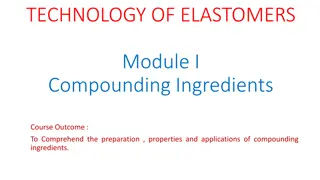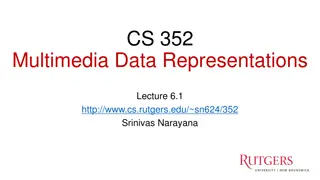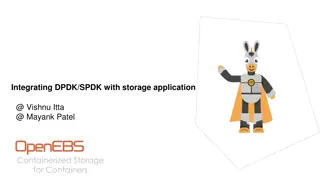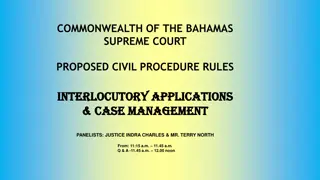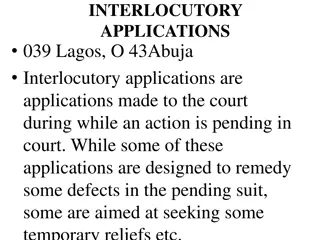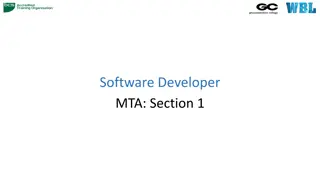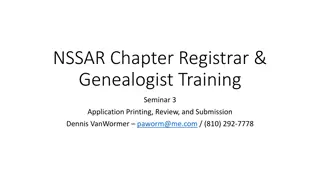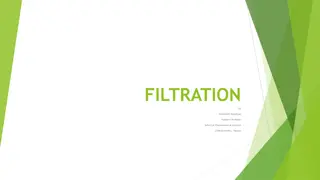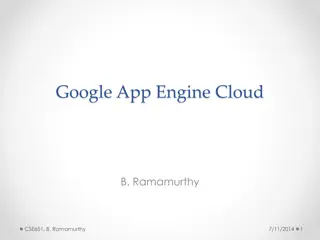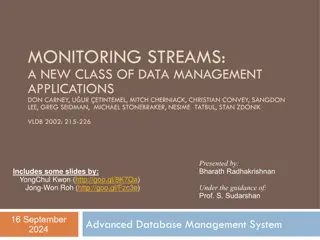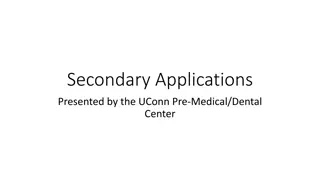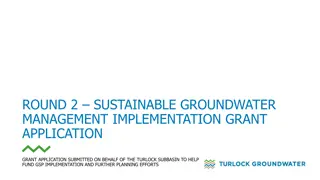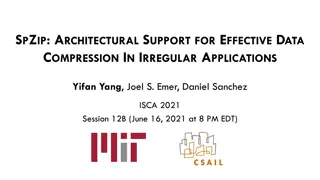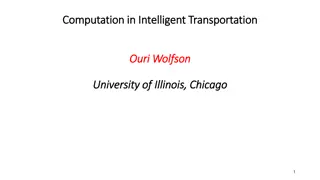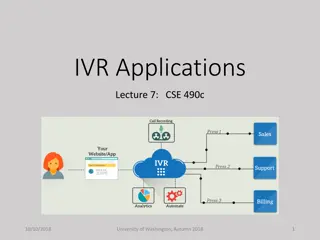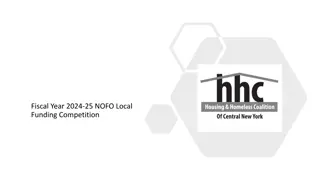Overview of Pultrusion Process and Applications
Pultrusion is an automated manufacturing process used for creating continuous cross-section profiles of composite materials. The process involves using reinforcements such as E-glass, S-glass, carbon/graphite, and aramid, along with resins like polyester, vinyl ester, and epoxy. Pultruded parts find applications in various industries, including electric utility for their non-conductive and insulating properties. The six key elements in the pultrusion process ensure efficient production of quality profiles.
Download Presentation

Please find below an Image/Link to download the presentation.
The content on the website is provided AS IS for your information and personal use only. It may not be sold, licensed, or shared on other websites without obtaining consent from the author.If you encounter any issues during the download, it is possible that the publisher has removed the file from their server.
You are allowed to download the files provided on this website for personal or commercial use, subject to the condition that they are used lawfully. All files are the property of their respective owners.
The content on the website is provided AS IS for your information and personal use only. It may not be sold, licensed, or shared on other websites without obtaining consent from the author.
E N D
Presentation Transcript
PULTRUSION PROCESS automated process for manufacturing composite materials into continuous cross-section profiles
PULTRUSION APPLICATIONS usually grouped into two categories solid rod and bar stock structural profiles selection of pultruded parts not strictly based on price competitiveness, but other characteristics not found in traditional materials non-conductive ladder rails (highest volume application) applications in the electric utility industry (insulating properties) insulators hot-line maintenance tools booms for electrical bucket trucks grating systems (walkways, stairs, ...) in highly corrosive environments
REINFORCEMENTS USED IN PULTRUSION type E-glass, S-glass carbon/graphite aramid form roving mat fabric
RESINS USED IN PULTRUSION low viscosities (500 cps) ability to cure quickly polyester (most common) control of styrene level critical - must achieve satisfactory cross-link structure without leaving residual (unreacted) styrene in finished composite shrinks upon cure facilitating release from die vinyl ester resin slower process speed due to slower reaction epoxy very slow process speed reaction rate is very slow - gelation of epoxy resins occurs at a later stage of reaction - critical exotherm must be contained within die typically shorter pot life drip off at die entrance must be discarded rather than recirculated to bath temp profiles typically hotter tendency to bond strongly to die wall
SIX KEY ELEMENTS IN PULTRUSION PROCESS three occur prior to pultruder reinforcement handling system (creel) resin impregnation station material forming area three integral to pultruder components that heat and consolidate equipment to pull pultrusion equipment to cut pultrusion
REINFORCEMENT HANDLING SYSTEM continuous fiber (roving) creels usually first station on a process line directly followed by creels designed for rolls of mat, fabric, and/or veil as material travels toward impregnation area, alignment must be controlled - accomplished by using creel cards that have predefined specific locations for each material
RESIN IMPREGNATION dip bath (most common) fibers passed over and under wet-out bars, causing fiber bundles to spread and accept resin suitable for products that are all roving construction or that are easily formed from resulting flat ply that exits wet-out bath custom resin baths when impractical to dip materials into bath (i.e. vertical mat) bath walls and plates are machined and positioned to accommodate necessary preform shape and alignment impregnate without moving reinforcements outside of their intended forming path
FORMING FOLLOWS IMPREGNATION forming guides attached in front of pultrusion die ensure positive alignment of the formed materials with the die cavity sizing of forming guide slots, holes, and clearances must be designed to prevent excess tension on relatively weak and wet materials, yet allow sufficient resin removal to prevent high force at die entrance forming guide materials include Teflon, polyethylene, chromium plated steel and various sheet steel alloys requires experienced craftsperson to design and fabricate forming guides hollow parts use mandrel cantilevered through pultrusion die
ALTERNATIVE IMPREGNATING AND FORMING METHOD inject resin directly into die after dry materials formed eliminates problems associated with dip bath limitations satisfactory wet-out air entrapment maximum fiber content environmental concerns with (covered) dip bath
CONSOLIDATING AND CURING positioning and anchoring of die - must transfer thrust that develops as material is pulled through die to the frame without allowing movement of die or deflection of frame source of cooling water or air is essential in front of die at start-up and during temporary shutdown periods to prevent premature gelation at die entrance heating of die electric circulating thermal fluid others (microwave, rf)
THREE COMMON CURING METHODS die curing most often multiple zones start at low temp and increase across zones easy to control and achieve steady state tunnel oven method pultrusion is gelled in die and fully cured during travel through oven length of oven determined by line speed, part dimensions, and curing characteristics of resins split die method split mold halves brought up against pultrusion as it exits die line stops while curing takes place, continues when curing complete non-uniform cross-section possible
MOST CRITICAL PULTRUSION PROCESS CONTROL PARAMETER IS DIE HEATING PROFILE determines rate of reaction position of reaction within die magnitude of peak exotherm improperly cured pultrusion will exhibit poor physical and mechanical properties, yet may visually appear identical to adequately cured pultrusion
CLAMPING AND PULLING 10 ft or more between die exit and pulling device to allow hot pultrusion to cool and develop adequate strength to resist clamping forces intermittent-pull reciprocating clamp single clamp clamp - pull - release - return during return interval, pultrusion remains stationary until clamping and pulling cycle can be reinitiated continuous-pull reciprocating clamp (most common) clamp - pull - release return cycle is synchronized between two pullers to provide continuous pulling motion continuous-belt pullers double continuous belts through which the pultrusion is passed contact area of belted puller is generally longer than found with reciprocating clamp pullers - less pressure applied to profile
CUTOFF radial arm saw or pivot saw on table that moves downstream with product flow continuous-grit carbide or diamond edge blade
ADVANTAGES OF PULTRUSION high throughput rate finished part lines can reportedly produce certain profiles at 10 - 15 ft/min more typical line speeds in the range of 2 - 4 ft/min high material usage (low process waste, part is net ) able to use wide variety of reinforcement types, forms and styles with many thermosetting resins and fillers complex thin-walled shapes can be fabricated (traditionally extruded in aluminum, PVC) can fabricate extremely large parts can fabricate any transportable length parts
DISADVANTAGES OF PULTRUSION cross-sections typically need to be constant difficult to maintain tight tolerances shrinkage (commonly 2% - 3%) difficult to control cross-section dependent (variation in thickness) straightness along length lateral and bowing may be able to remove with force quick curing resin systems typically have lower mechanical properties complexity of process problems resulting from resin and fibers accumulating and building up at die entrance parts are run resin rich to account for fiber anomalies, strength is sacrificed voids may result in parts if excessive opening given at die entrance




